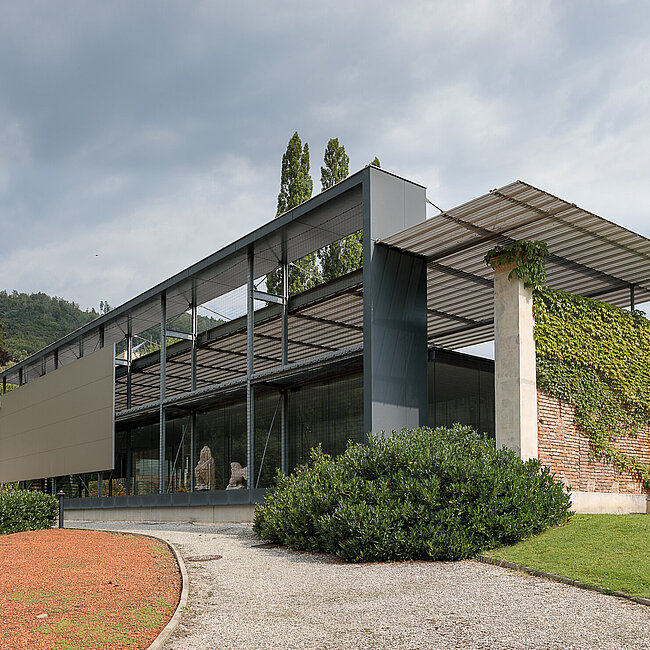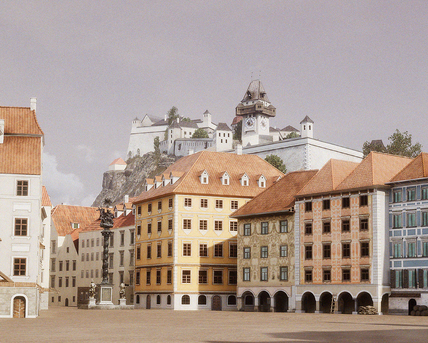The development of the museum began with the closure of the Museum for Prehistory and Early History in 2004 and the Coin and Antiquities Cabinet in 2005, which had been accommodated on the ground floor at Schloss Eggenberg since 1971 and 1982 respectively. It was time for a new start. The departments had been housed since their foundation at various locations within the Joanneum. The collections in the Coin and Antiquities Cabinet, later called the Prehistoric Collection, Antiquities and Coin Cabinet, had remained in the Lesliehof, the ancestral home of the Joanneum, right from their first establishment until 1971. In 1889, the mediaeval and modern-era exhibits were relocated to the Prandstetter-Teimersche Building in Schmiedgasse because of a shortage of space.
In 1965, the collection of Roman carved stones and mosaics was moved to Schloss Eggenberg, and on foundation day the same year put on display in a protected building in the palace park there. With the start of design work on a new archaeological museum by BWM Architects and Partners, work also began on the comprehensive classification and digital recording of the collection. Parallel to the scientific and architectural planning, extensive conservation and restoration work was undertaken on the exhibits. Right from the first, it was the declared wish of the scientific curators, to present them jointly again with the collections hived off in 1971 into a separate Museum for Prehistory and Early History and an Antiquities Cabinet. This aim has now been achieved in ideal fashion with the Archaeology Museum.





















![Exhibition view of the permanent exhibition in the Archaeology Museum [Translate to English:] Ansicht Dauerausstellung Archäologiemuseum Schloss Eggenberg](/fileadmin/_processed_/f/f/csm_Archaeologie_Dauerausstellung_2023_19_fc8eb0ec3f.jpg)






